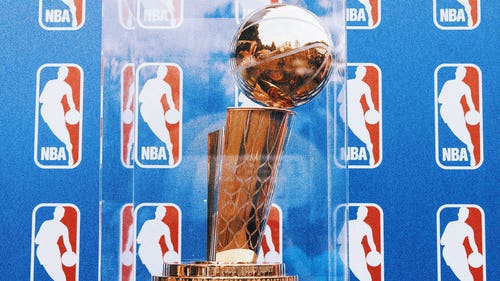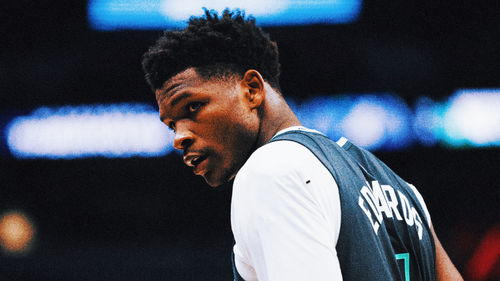
NBA: International Players Are Taking The League By Storm
As the NBA continues to expand basketball across international borders, foreign youth is making its mark on a league thought to be dominated by Americans
If you’ve been paying any attention to the NBA throughout the young 2016-17 season, or even have a Twitter account for that matter, there are three names of international players that you haven’t missed: Kristaps Porzingis, Joel Embiid, and Giannis Antetokounmpo.
These three players have taken the league by storm through each’s unique talents, which range from the 6-foot-11 Antetokounmpo running the floor like a point guard, to Joel Embiid drilling three’s regularly as the rookie continues to do it all for the Sixers, to Porzingis leaving Jared Dudley for dead before throwing it down at Madison Square Garden, where he has quickly become something of a folk hero to Knicks fans.
However, these three have more in common than freak physical traits and solid All-Star résumés. They are the most recognizable names amongst the plethora of international talent that is rapidly taking over the NBA.
Increased internationality in the NBA has been the case for a while. In fact, since the 1980-81 season, the amount of players born outside of the USA has increased an immense 26.9 percent. Despite the fact that the numbers have been on the rise, the league has never seen anything like the elevation of global youth making its way to the NBA.
The amount of foreign-born NBA players is skyrocketing. pic.twitter.com/r7lTmXTB0S
— Jack Pontin (@JackPontin) January 7, 2017
The Greek Freak
Antetokounmpo, dubbed “The Greek Freak,” brings more to the table than just a long frame and crazy athletic ability. Since being drafted in 2014, he has become the face of the Milwaukee Bucks franchise.
He will most likely find himself in New Orleans for the All-Star game next month. With the versatility to play (and defend) just about every position on the court, the Freak has put up mind-boggling numbers to this point in the season. He averages 24.0 points, 9.0 rebounds, 5.7 assists, 1.9 steals, and 2.1 blocks per game. He is dominating in literally every aspect of the game.
Kristaps
Another one of the league’s “big three” international youngsters, Kristaps Porzingis, is single-handedly giving hope to Knicks fans in the Big Apple. The fourth overall pick in 2015, Zingis has displayed the ability to protect the rim, to play above the rim, and to stretch the floor with his deadly jumpshot.
The 7-foot-3 Latvian has a chance to join Greek Freak on the Eastern Conference All-Star Team, and he has the Knicks two games out of the 8th playoff spot in the East.
More from Sir Charles In Charge
Dominating The Draft
And would you believe me if I told you that three of the previous four No. 1 overall NBA draft picks were foreign-born players? Anthony Bennett (Canada-2013), Andrew Wiggins (Canada-2014), and Ben Simmons (Australia-2016) were all born in other countries before making their way to America in pursuit of a basketball career.
Bennett is currently out of the NBA, but when the Cleveland Cavaliers selected him with the first pick, he became the first Canadian to ever be drafted first.
The 2016 NBA Draft set the record for most international players selected in a single draft when 28 non-American-born athletes were selected. Among those 28, five were selected with top-10 selections, and eight of the top-15 picks were international ballers. But, not all of the draftees made their way to the USA immediately, as some are currently being “stashed” in other leagues around the world. A trend that has become popular with almost every team in the NBA is the “draft stash.”
A draft stash is an international player selected by a team that holds his rights while he continues to get regular playing time and quicker development with their foreign team. For example, when Ricky Rubio spent two years in Spain after being drafted, Minnesota was stashing him so that they could leave a roster spot open to sign a player capable of making a more immediate impact.
Eight of the 28 international players drafted in 2016 are being stashed overseas.
The trend of draft stashing has contributed greatly to the increase in international players in the NBA. A player is much more likely to declare for the draft if he knows that there will be time allotted for him to stay in a familiar county and develop his game. (The fact that the average salary for an NBA player is about $3 million more than a top-tier Euroleague player makes probably doesn’t hurt the appeal of coming to America, either.)
For a team like Boston, which had more picks (7) than open roster spots heading into the draft, picking a stash could be much more valuable than throwing the picks away in a one-sided trade. Three of the eight 2016 stashes belong to the Celtics.
While drafting and stashing is just an insurance policy and doesn’t always result in NBA success, many players come to America and play important roles on the teams that drafted them in years past. The most promising young player (and perhaps even best player in general) on the Denver Nuggets over the past two seasons has been center Nikola Jokic, who played in Serbia for one year after he was drafted before coming to America.
He exploded onto the scene last year, displaying a unique offensive game for a player of his size (6’10”). He made the All-Rookie First Team in 2015 and finished 3rd in Rookie of the Year voting, behind Karl-Anthony Towns and his European counterpart Porzingis.
There has been a spike in international players drafted by teams since '08. pic.twitter.com/nqgdRZbFMZ
— Jack Pontin (@JackPontin) January 7, 2017
So we know why there are more players being drafted and coming across the pond to play, but why are these foreigners making such a significant impact immediately after coming overseas to play against the world’s best basketball players?
Why are players such as Philadelphia’s Dario Saric, Phoenix’s Dragan Bender, Kristaps, and Jokic, to name a few, expected to achieve such high expectations for teams in need of a renaissance? Sure, they’re all giants and can display some athletic ability, and each is a capable three point shooter. Although so was Andrea Bargnani, who was the first overall pick in 2005 and is considered a complete bust.
The answer to both of the aforementioned questions is actually quite simple. The way that basketball is being played in today’s NBA caters to the skill sets of many of the up-and-coming Europeans that are amongst the next generation of American professional basketball.
Since the 2010-11 season, teams are attempting 8.7 three point attempts more per game. This stat should surprise nobody, as the importance of the three-pointer is exemplified each time a game is played.
Gone are the days when a player like DeAndre Jordan or Andre Drummond could be the most important man on the court. Shaquille O’Neal was able to take over a basketball game simply because he was taller and stronger than everyone else.
The centers who make the biggest imprint on a game are those who can spread the floor as well as post up. DeMarcus Cousins, widely considered the league’s best big man, is shooting 37 percent from beyond the arc this year. How crazy is it to think that DeMarcus Cousins, who solely looked to bully his way into the paint during his early years as a pro, has become an above average outside shooter?
The reliance on the three has lifted the value of the “stretch four” European, who is no longer asked to try to back down opponents while overcoming a 25-pound disadvantage.
More from Sir Charles In Charge
Even veterans such as Marc Gasol are hopping onto the “stretching the floor” hype train. The Spaniard is having the best season of his career in Memphis and has added a dangerous outside shot to his already polished game. Never having averaged more than 0.2 three point attempts per game, Gasol is averaging 3.4 outside shots per contest, but the more impressive stat might be that he is knocking down 1.4 treys per game.
While many of the international players come from professional leagues overseas, some take a different path to the NBA. Many American high schools provide athletes from around the globe the opportunity to gain national attention by traveling around the country and playing against the best talent in the nation.
Ben Simmons, Joel Embiid, Cheick Diallo, and Thon Maker used this method to kickstart their basketball careers.
Each of these players uses a different approach to that of the “European prototype” in his game. Simmons, who came from his native Australia to Montverde Academy in Florida, is actually known to be a weak shooter, but he uses strength, size, and court vision to take over games. As I mentioned earlier, he was the first overall pick of the 2016 draft; however, due to a foot injury, he is yet to make his NBA debut.
Joel Embiid came into the league as a skinny, raw 7-footer with foot problems and a knack for scoring around the rim. Having left Cameroon for Gainesville’s The Rock School, he has become one of the biggest stories of this season. His popularity has come through carrying the Sixers back to watchability, and thus he is a legitimate All-Star candidate. He has the ability to shoot the three, if necessary, but prefers to fire a mid-range jumper or finish over a defender with a hammering jam.
We have not seen much of Cheick Diallo yet, as he did not live up to expectations at Kansas and hasn’t been given a real chance in New Orleans. However, in his appearances for the Pelicans, he has not disappointed. Standing at 6-foot-9 and weighing only 220 pounds, Diallo is a little undersized for a forward but has had no problem scoring inside and pulling down countless amounts of rebounds.
Per 36 minutes he has averaged 17.8 points and 11.8 rebounds per game.
Thon Maker’s career to this point has been mysterious to say the least. From declaring for the NBA Draft out of high school to a controversy suggesting that he is four years older than he claims, the 7-footer from Sudan is a walking question mark. He has not played much for Milwaukee, and there are only high school mixtapes at our disposal to make an assumption about what kind of player he will become.
He flashed versatility in the summer league after being drafted 10th overall, but there is still much to be seen.
Now more than ever, there is a crop of young international players prepared to take the NBA, and America, by storm. Us as fans are experiencing the evolution of a league once dominated by domestic athletes to one that is international in its very nature.
The emergence of the foreign-born superstars is not only good for the competitiveness of the league and its players, but it also provides an outlet for the league to grow into other countries, making the game of basketball significantly more popular worldwide.










































































































































